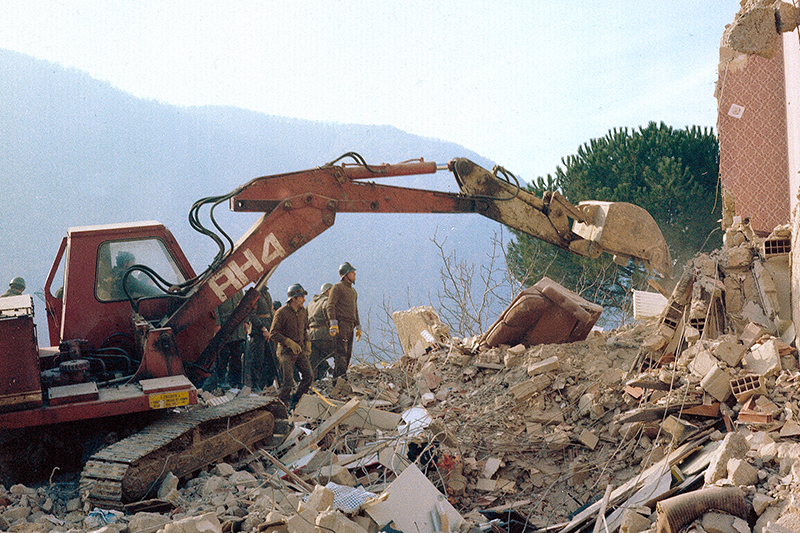The Irpinia earthquake

On November 23, 1980, an earthquake of magnitude 6.9 hit a large area of Campania, Basilicata, and marginally Puglia, resulting in 2734 casualties. A total of 688 municipalities were severely damaged, with half of them losing their entire housing infrastructure. The earthquake also triggered multiple landslides, including massive ones in Calitri, Caposele, Calabritto, and Senerchia.
Power and telephone lines went down, disrupting communications between the earthquake areas and the center. Rail traffic completely stopped, and the whole country was cut in two. The situation was further worsened by the panicking population trying to escape by blocking the main traffic routes. Emergency response was marked by significant difficulties and delays. The initial rescue efforts suffered from a total lack of coordination: volunteers, regional structures, and local authorities spontaneously mobilized without indications and clear operational targets from the Ministry of the Interior.
On November 26, President Pertini addressed the Italian population through a televised message, condemning the delay in rescue efforts and the severe failures in state intervention in the earthquake-affected areas. He stated that specific responsibilities for these failures would be identified. Pertini concluded his speech by saying, "This is not about politics; this is about human solidarity; all Italian men and women must rush to the aid of their brothers and sisters affected by this disaster. Because, believe me, the greatest way to commemorate the dead is to think of the living." Following the confusion of the first three days, the government intervened by appointing extraordinary commissioner Giuseppe Zamberletti. He successfully reorganized rescue efforts and engaged in dialogue with mayors.
In those months, a reflection on the need for better rescue coordination began, which eventually led in February 1982 to the appointment of Zamberletti as Minister for Civil Protection Coordination and, a few months later, to the establishment of the Department of Civil Protection.
Photo: Teams working after the Irpinia earthquake on November 23, 1980 / The National Fire and Rescue Service